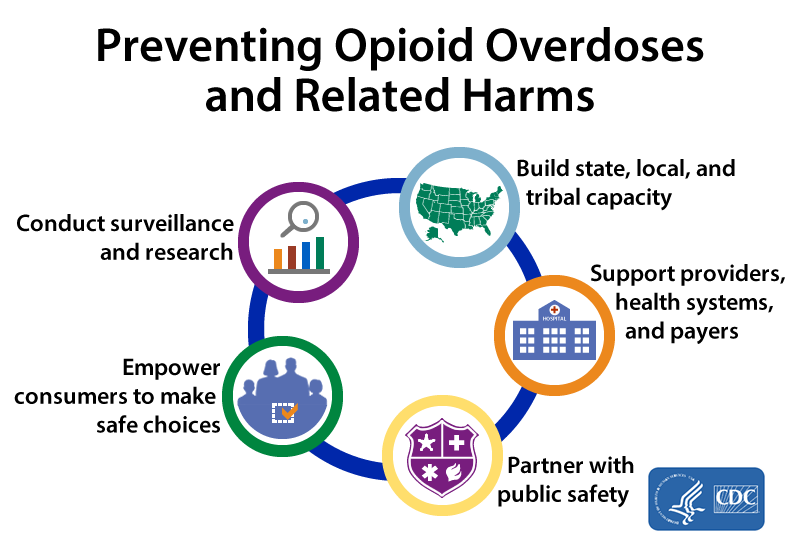The Opioid Crisis
What We Know
2018 data shows that every day, 128 people in the United States die after overdosing on opioids.
21-29% of patients who are prescribed opioids for chronic pain will misuse them and 8-12% will develop Opioid Use Disorder.
Around 80% of people who use heroin first misused prescription opioids.
Opioid overdoses increased by 30% from July 2016 through September 2017 in 52 areas in 45 states.
The Midwest saw a 70% increase in opioid overdoses from July 2016 to September 2017.
In 2017, there were 952 overdose deaths involving opioids in Missouri. This is a rate of 16.5 deaths per 100,000 persons. This rate is higher than the national rate (14.6 deaths per 100,000 persons).


What is Being Done About the Opioid Crisis?
The U.S. Department of Health and Human Services (HHS) is focusing its
efforts on five major health priorities:
- Improving access to treatment and recovery services
- Promoting the use of overdose-reversing drugs
- Strengthening our understanding of the epidemic through better public health surveillance
- Providing support for cutting-edge research on pain and addiction
- Advancing better practices for pain management

Learn more here

How Will Medication for Addiction Treatment (MAT) Help with the Opioid Crisis?
MAT decreases opioid use, opioid-related overdose deaths, criminal activity, and the spread of infectious diseases.
MAT increases social abilities (such as fulfilling roles at work, in social settings, and in relationships with family and partners) and staying in treatment.
Treatment of opioid-dependent pregnant women with methadone or buprenorphine improves outcomes for their babies.
Learn more here
According to SAMHSA, using MAT in treatment for OUD has proven to:
Improve patient survival.
Increase consistency in treatment.
Decrease illicit opiate use and other criminal activity among people with substance use disorders.
Increase patients’ ability to gain and maintain employment.
Improve birth outcomes among women who have substance use disorders and are pregnant.
Learn more here

For more information on Opioid Use Disorder, check out the Recovery Tools section on this website.
For more information on MAT, check out the Recovery Medication section on this website.